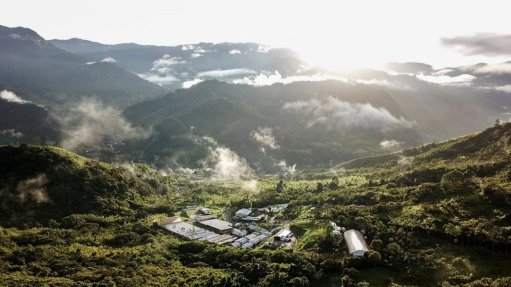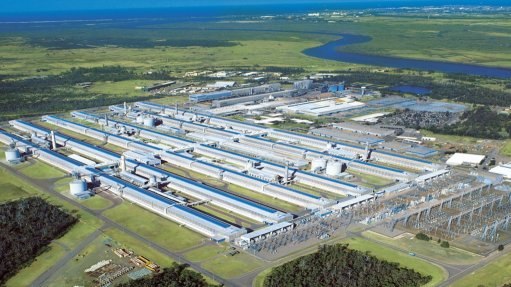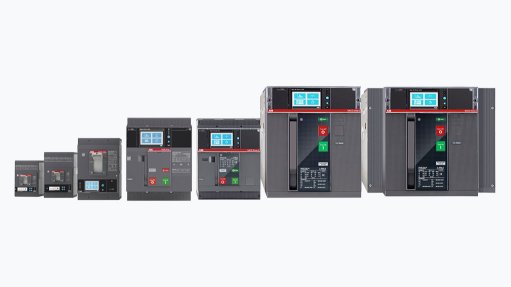CGS provides expert insights on critical minerals
While South Africa is well positioned to take advantage of the opportunities afforded by the increasing demand for critical minerals globally, issues such as the need for skills development, suitable technologies and clear regulatory frameworks were discussed during the fourth session of this year’s Joburg Indaba, held on October 1.
Using the yearly Joburg Indaba as a platform to discuss the implications and definition of critical minerals in South Africa, the session titled ‘Critical minerals: what do they mean in a South African context’ honed in on the various opportunities and challenges the country faces in this regard.
Council for Geoscience (CGS) CEO Mosa Mabuza was among the speakers on the panel, sharing valuable insights on the importance of geology in identifying critical minerals and the importance of mapping the country to better understand the availability of these minerals.
With extensive exploration experience in multiple regional jurisdictions spanning the Southern African Development Community, West Africa and Canada, Mabuza has been serving as CGS CEO since 2017, following his tenure as deputy director-general for mineral policy and promotion in the Department of Mineral Resources and Energy (DMRE).
Other panellists included Orion Minerals MD and CEO Errol Smart, Thungela CEO July Ndlovu, Fluor sales director Kudakwashe Maramba and African Rainbow Minerals CEO Phillip Tobias.
During the discussion, Mabuza explained that minerals are defined as critical owing to their contributions to national development priorities, which can encompass concerns from food security to energy security.
Hence, given their importance across a myriad of sectors, Mabuza argued that it is, therefore, difficult to exclude any mineral from the basket of critical minerals, noting that all of them, by definition, contribute towards these national developmental priorities.
Mabuza thus argued that geological mapping is an essential key in unlocking value from critical minerals.
He posited, for example, that in the context of climate change and the country’s net zero commitment, geological mapping to map energy requirements is necessary, thereby providing better understanding of how many minerals will be needed amid the global energy transition.
“Mapping allows us to quantify the quantum of minerals that will be needed between now and the time frame that the world has committed to, and that gives us a sense of delineating what will constitute the exploration boom.”
In this vein, Mabuza noted that CGS’s support with the DMRE in mapping the country at a granular scale is yielding positive results.
For example, Mabuza highlighted the significance of graphite in electric vehicles, noting that geological mapping has uncovered a prospect that has a 260-million tonnes of graphite resource, which he said could position South Africa as a major graphite supplier.
“All of this arises because the government deliberately invested in geological mapping.
“This one resource means that South Africa could be placed on top of the world as the graphite supplier of choice. This will then trigger the policy consideration you put in place, as well as skills, development and technologies. What better time for this information to be emerging as we talk about critical minerals, so that we don’t talk about them loosely, we are very deliberate about them,” he expressed.
UNLOCKING VALUE
Furthering the discussion, Smart argued that a functional, investor- friendly regulatory system is necessary to unlock value from critical minerals in South Africa.
He mentioned that regulatory certainty is necessary to boost investor confidence, expressing optimism that the mining cadastre will assist in this regard.
As previously reported in Mining Weekly, South Africa’s new mining cadastral system, called Project Indwe, is currently on track for roll-out in June 2025.
During a presentation at the South African Investment Luncheon, hosted as part of the Africa Down Under conference, in Perth, Australia, on September 5, DMRE mineral and petroleum regulation deputy
director-general Tseliso Maqubela reiterated that the new cadastre will provide a modern system to enhance the efficiency and transparency in the application, granting and management of mining rights.
With the new system, the department is seeking to improve the quality, accuracy and accessibility of all relevant information; have an efficient technological platform; reduce turnaround times in the application and granting processing; and ensure ease of compliance for the mining industry.
“We are going through an incredibly interesting time in South Africa at the moment … and we are getting to this whole crux of the matter [which is that the] regulatory environment has to be clear, transparent and efficient,” Smart expressed.
Tobias added that beneficiation is also key in unlocking value from critical minerals, noting the role of technological advancement and research and development in enhancing beneficiation processes.
Tobias agreed with Smart on the importance of creating an enabling environment to unlock value, noting, for example, the challenges of high energy costs and the need for a secure and cost-effective power supply to support beneficiation.
“If the power is not secured, is not cost-effective, it basically takes us out of the running as a country, and really displaces us and we end up being price takers instead of really being price definers,” he warned.
Mabuza thus suggested a regional approach to beneficiation, where each country focuses on its strengths and supports regional integration, with Tobias agreeing on the importance of regional consolidation.
INITIATIVES
As part of its integrated and multidisciplinary approach, CGS’ scientific focus areas include minerals and energy.
The Geoscience for Minerals and Energy theme of CGS benefits from a legacy of more than 110 years of geoscience data collection, information and knowledge.
The planning and development of CGS’ Geoscience for Minerals and Energy theme is also closely correlated with the numerous provincial and local embodiments of South Africa’s National Development Plan: Vision for 2030, including various provincial and district development models throughout the country.
As noted in its annual report for 2022/23, CGS notes that focussed target regions are selected in anticipation of these having a direct impact on key development goals.
It explains that the minerals and energy systems that are being researched and developed are notable both at a local and international scale, relative to their supply, demand and beneficiation criteria.
These include key minerals that are deemed critical to future industrial and technological development.
With this in mind, CGS is undertaking various integrated and multidisciplinary geoscience projects which aim to produce high-quality geoscientific information and knowledge.
Consequently, CGS has been spearheading South Africa’s first pilot carbon capture, utilisation and storage (CCUS) in Mpumalanga since 2021, conducting extensive research to identify suitable geological formations for carbon dioxide (CO2) storage, under the mandate of the DMRE.
This landmark development follows the successful completion of a geological characterisation study, including the drilling of a 1 800 m stratigraphic borehole at the Goedehoop site, confirming its suitability for safe and permanent CO2 storage.
This site represents a crucial step towards deploying CCUS technology as a viable solution to mitigate CO2 emissions.
The CGS also signed a memorandum of understanding with the Mpumalanga Department of Economic Development, Environment and Tourism, signifying a commitment to joint efforts in advancing CCUS and related programmes as part of a broader intergovernmental strategy.
Article Enquiry
Email Article
Save Article
Feedback
To advertise email advertising@creamermedia.co.za or click here
Press Office
Announcements
What's On
Subscribe to improve your user experience...
Option 1 (equivalent of R125 a month):
Receive a weekly copy of Creamer Media's Engineering News & Mining Weekly magazine
(print copy for those in South Africa and e-magazine for those outside of South Africa)
Receive daily email newsletters
Access to full search results
Access archive of magazine back copies
Access to Projects in Progress
Access to ONE Research Report of your choice in PDF format
Option 2 (equivalent of R375 a month):
All benefits from Option 1
PLUS
Access to Creamer Media's Research Channel Africa for ALL Research Reports, in PDF format, on various industrial and mining sectors
including Electricity; Water; Energy Transition; Hydrogen; Roads, Rail and Ports; Coal; Gold; Platinum; Battery Metals; etc.
Already a subscriber?
Forgotten your password?
Receive weekly copy of Creamer Media's Engineering News & Mining Weekly magazine (print copy for those in South Africa and e-magazine for those outside of South Africa)
➕
Recieve daily email newsletters
➕
Access to full search results
➕
Access archive of magazine back copies
➕
Access to Projects in Progress
➕
Access to ONE Research Report of your choice in PDF format
RESEARCH CHANNEL AFRICA
R4500 (equivalent of R375 a month)
SUBSCRIBEAll benefits from Option 1
➕
Access to Creamer Media's Research Channel Africa for ALL Research Reports on various industrial and mining sectors, in PDF format, including on:
Electricity
➕
Water
➕
Energy Transition
➕
Hydrogen
➕
Roads, Rail and Ports
➕
Coal
➕
Gold
➕
Platinum
➕
Battery Metals
➕
etc.
Receive all benefits from Option 1 or Option 2 delivered to numerous people at your company
➕
Multiple User names and Passwords for simultaneous log-ins
➕
Intranet integration access to all in your organisation























